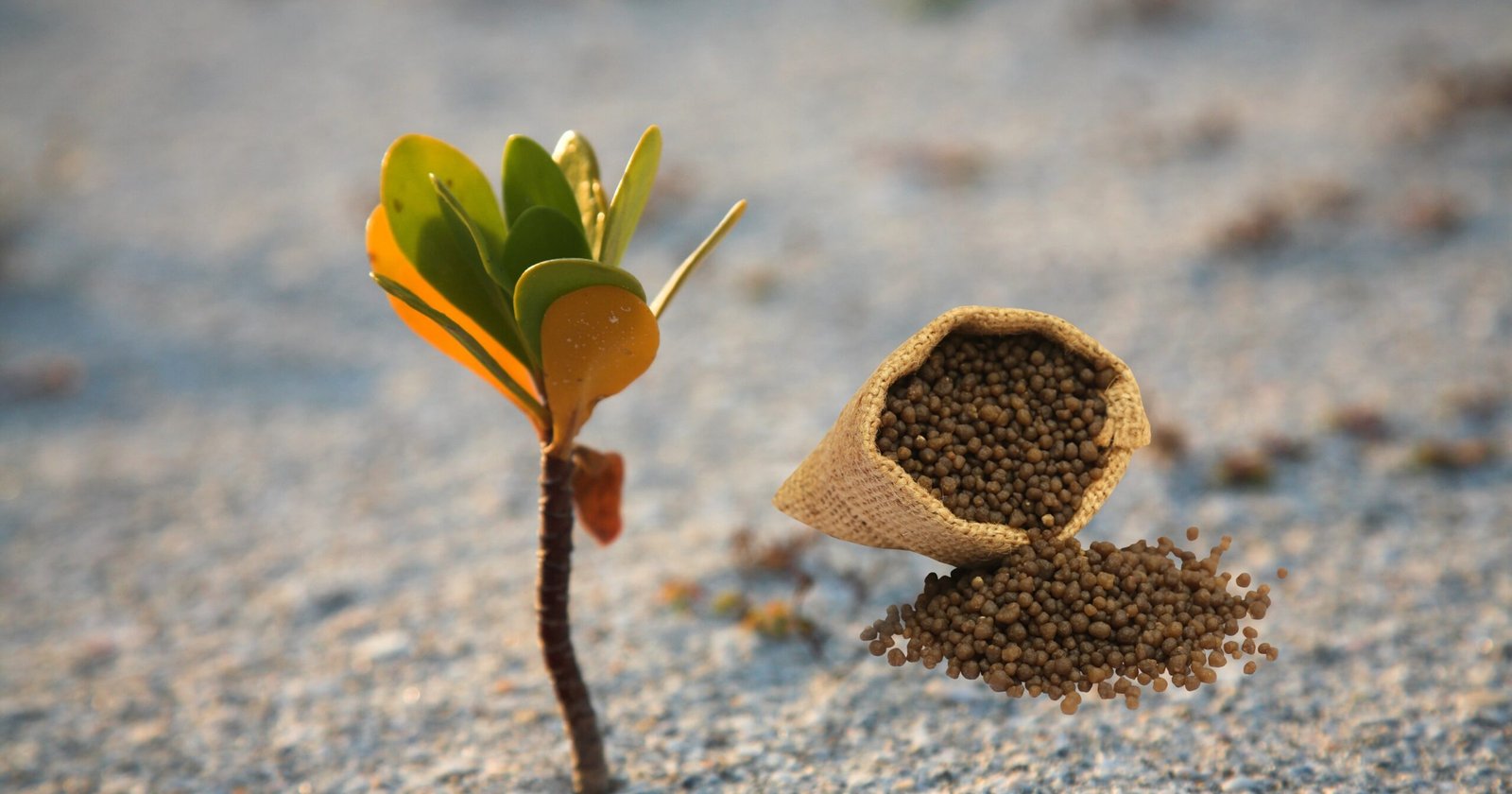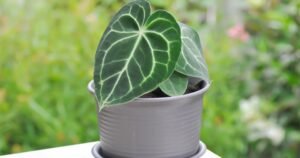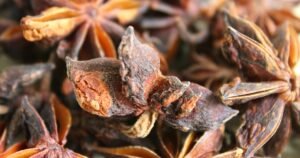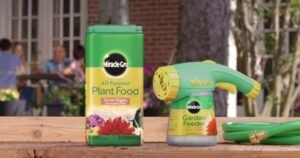Can Miracle-Gro Burn Plants? Nourish them regularly, ideally every 1-2 weeks. The formula is plant-friendly and guarantees not to cause burns when used according to the instructions.
Yes, Miracle-Gro, like any fertilizer, can potentially burn plants if not used per the manufacturer’s instructions.
This is typically a result of over-fertilization or fertilizer application to wet foliage, which can lead to the concentration of salts in the soil, causing a “burn” effect on plants. It’s crucial to follow the recommended dosage and application guidelines to ensure the health of your plants.
Introduction
Miracle-Gro is a popular water-soluble fertilizer that gardeners commonly use to nourish their plants and promote healthy growth.
However, concerns and debates have been regarding whether Miracle-Gro can potentially burn plants.
In this article, we will delve into the components and application of Miracle-Gro, explore the potential reasons it might cause harm to plants, and discuss the best practices to use it without damaging your beloved greenery.

Understanding Miracle-Gro
Miracle-Gro is a well-known fertilizer brand offering a range of products designed to provide essential nutrients to plants.
These nutrients typically include nitrogen, phosphorus, potassium, and various micronutrients necessary for plant growth.
Miracle-Gro products are available in different formulations to cater to specific plant needs, such as all-purpose, bloom booster, and vegetable fertilizer.
How Miracle-Gro Can Burn Plants
As beneficial as it can be for plant growth, Miracle-Gro can unfortunately also burn plants if improperly used.
This typically happens due to over-fertilization. When too much Miracle-Gro is applied, it can elevate the salts in the soil, resulting in a “burn” effect on plants.
This is why following the recommended dosage mentioned on the product’s packaging is crucial.
Applying the fertilizer to wet foliage can also lead to burning, as the water can enable the fertilizer to adhere to the leaves, causing damage.
Understanding these potential risks can help gardeners use Miracle-Gro more effectively and safely, preventing unnecessary plant harm.
Preventing Miracle-Gro Burn
Follow the manufacturer’s instructions carefully to prevent burning your plants with Miracle-Gro.
Always measure the recommended amount of fertilizer and dissolve it thoroughly in water before applying.
Do not apply the fertilizer to wet leaves, and avoid over-fertilization by sticking to the recommended application frequency.
Water your plants thoroughly after applying the fertilizer to help the nutrients seep into the soil and reduce the concentration of salts on the surface.
Taking these precautions ensures that your plants reap the maximum benefits from Miracle-Gro fertilizers without harm.

Components of Miracle-Gro
Nitrogen (N):
Nitrogen is a crucial component for promoting leafy, green growth in plants. It aids photosynthesis, protein synthesis, and overall plant development.
Phosphorus (P):
Phosphorus is vital for promoting root development and flower and fruit formation. It supports energy transfer within the plant.
Potassium (K):
Potassium contributes to plant vigor, disease resistance, and stress tolerance. It aids in enzyme activation and helps regulate water balance within the plant.
Micronutrients:
These include essential trace elements like iron, copper, zinc, and manganese. While needed in smaller amounts, micronutrients are crucial for various plant metabolic processes.

Can Miracle-Gro Burn Plants?
Can Miracle-Gro Burn Plants?
Over-Fertilization:
One of the primary reasons Miracle-Gro or any fertilizer can potentially harm plants is over-fertilization. When too much fertilizer is applied, especially in a concentrated form, it can cause fertilizer burn.
High Salt Concentration:
Fertilizers like Miracle-Gro contain salts. An excess of salt can accumulate in the soil when fertilizer is used excessively or inappropriately, leading to plant salt burn.
Imbalanced Nutrient Uptake:
Applying too much of a specific nutrient, such as excessive nitrogen, can disrupt the balance of nutrients the plant requires. This imbalance can lead to nutrient toxicity and subsequent damage to the plant.
Rapid Nutrient Absorption:
Plants can quickly absorb water-soluble fertilizers like Miracle-Gro. If the plants take up the nutrients too rapidly, it can overwhelm their systems and cause stress or damage.
Wet Foliage Application:
Applying Miracle-Gro or any fertilizer to wet leaves can cause the fertilizer to adhere to the foliage instead of being absorbed by the roots through the soil. This can lead to leaf burn or scorch, damaging the plant. To avoid this, ensure the leaves are dry when applying the fertilizer, and avoid application just before rain or watering.
Signs of Fertilizer Burn
Leaf Browning and Yellowing:
The tips or edges of the leaves may turn brown or yellow, indicating possible fertilizer burn.
Leaf Curling:
Fertilizer burn can cause leaves to curl or crinkle, affecting their overall appearance.
Stunted Growth:
Excessive fertilization can stunt growth rather than promote it, contrary to the intended purpose.
Wilting:
Fertilizer burn can disrupt water absorption and cause wilting, even if the soil is moist.
Preventing Fertilizer Burn and Maximizing Benefits
Follow Instructions:
Always follow the instructions on the fertilizer packaging regarding the application rate and frequency. Avoid using more than the recommended amount.
Proper Dilution:
When preparing the fertilizer solution, ensure proper dilution to avoid over-concentration of nutrients that could harm the plants.
Even Application:
Apply the fertilizer evenly across the soil to prevent localized concentrations of salts that can lead to burns in specific areas.
Watering:
Water the plants thoroughly after applying fertilizer. This helps distribute the fertilizer and prevent accumulation in one spot.
Regular Monitoring:
Keep an eye on the condition of your plants and adjust the fertilizer application accordingly. If you notice signs of burn, reduce or halt fertilization for a while.
Conclusion
Can Miracle-Gro Burn Plants? Miracle-Gro and similar water-soluble fertilizers can be highly beneficial when used appropriately, providing essential nutrients for robust plant growth and health. However, overuse or improper application can potentially lead to fertilizer burn, causing damage to your plants. It is crucial to follow instructions, diluting the fertilizer properly and applying it evenly to avoid concentrated nutrient pockets that can harm plants. Monitoring your plants for signs of stress or nutrient imbalance is essential, allowing you to adjust your fertilizer application accordingly and ensure your plants thrive and flourish.
FAQs
Is Miracle Grow bad for plants?
No, Miracle-Gro is not bad for plants when used correctly. It is designed to provide essential nutrients that promote growth and health. However, improper use can harm plants like any fertilizer, causing issues like fertilizer burn. Therefore, following the manufacturer’s instructions for application rate, frequency, and dilution is important to ensure safe and effective use.
What is the disadvantage of Miracle Grow?
The primary disadvantage of Miracle-Gro is the potential for overuse, leading to nutrient toxicity or fertilizer burn. It’s also a synthetic fertilizer, so continual use can lead to salt accumulation in the soil, potentially damaging the soil’s natural microbial activity. Lastly, it’s a quick-release fertilizer, meaning nutrients are absorbed fast but don’t provide long-term nourishment like slow-release or organic fertilizers.
Can you use Miracle Grow in the heat?
While it’s possible to use Miracle-Gro even in warm weather, care should be taken to prevent excess evaporation that may concentrate the fertilizer. It is best to apply it during the cooler parts of the day. Moreover, ensure adequate watering to facilitate nutrient absorption and prevent the risk of fertilizer burn.












